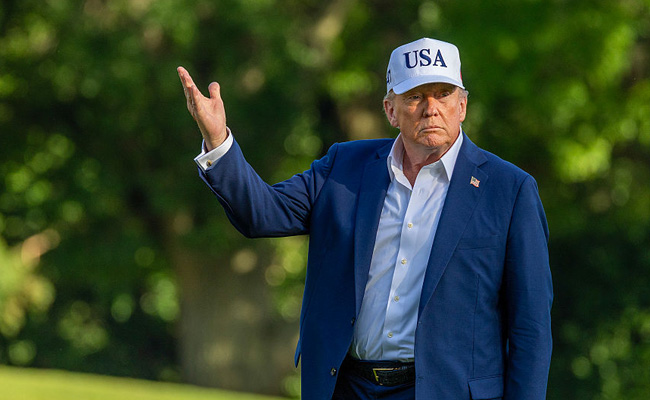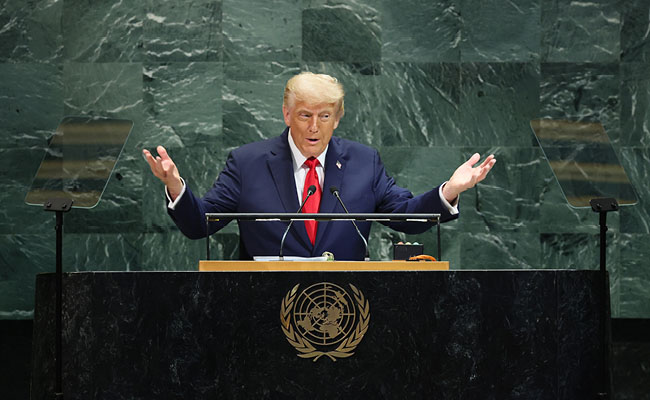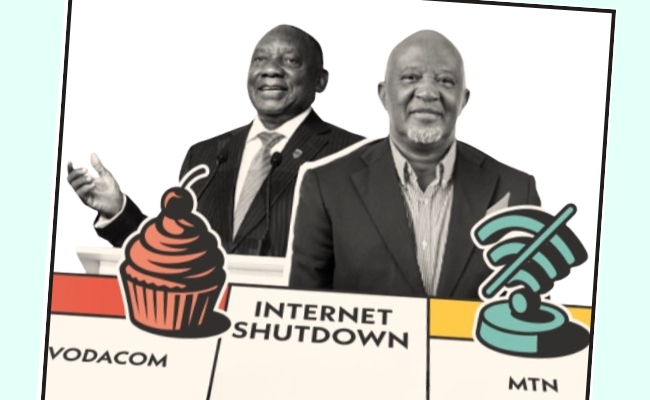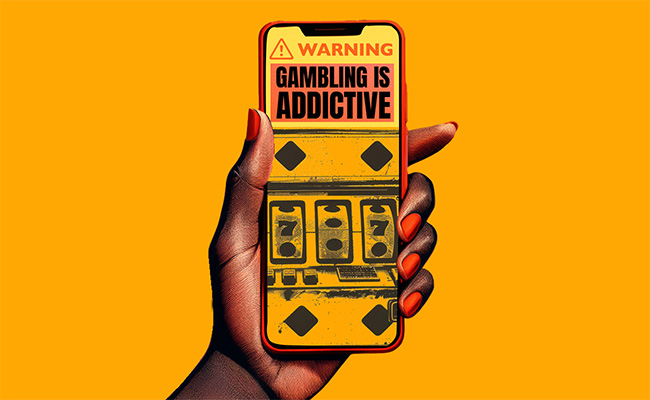The first time US President Donald Trump proposed 30% “Liberation Day” trade tariffs against South Africa in April this year, the rand slipped by 2.6% and the JSE ended the day 3.3% lower. This time? Meh.
An enormous amount of water has flowed under the bridge since the first announcement, and like many countries around the world targeted with gargantuan tariffs, the market reaction was muted, reflecting several mitigating factors.
First, the new set of letters addressed to the leaders of South Africa, Japan, South Korea, Myanmar, Laos, Kazakhstan and Malaysia did indicate a huge tariff increase, but this was combined with another 90-day delay in the application of the tariffs, an indication that deals with none of these countries had been finalised.
Second, since Trump has backed down substantially in negotiations with China and the UK, the two countries with which the US has forged trade agreements, there is now a high degree of scepticism about whether the tariffs he is talking about with the rest of the world will ever actually be implemented at the stated levels.
For example, initially, British car exports to the US were going to be tariffed at 25%, but once the deal was done, that fell to 10%. The colloquial phrase that has caught on about the practice of talking big and finally collapsing characterises Trump as the quintessential “Taco man” – Trump Always Chickens Out.
And third, there has been a widespread reassessment of precisely what kind of economic effect the imposition of tariffs would have, even in the worst-case scenario.
The result is that the JSE’s all share index ended Tuesday only a marginal 0.1% lower. On Wednesday, it dipped by even less – 0.03% – which is hardly the sort of crash you might have expected from an immediate 40% tax on exports to a major trading partner.
And while the rand initially lost about 0.8% of its value following Trump’s announcement on Monday evening, half of that drop had already been made up by close of business on Tuesday. And it continued to tread water on Wednesday.
And that is similar to what happened in the other named countries that received Trump’s love letters. The Japanese yen slipped 0.3%, and the South Korean won actually gained almost half a percentage point. And both these countries’ stock markets rose despite high levels of trade between these countries and the US.
So what is happening?
Nick Kunze, a portfolio manager at Sanlam Private Wealth, says he has been taken aback by how sanguine markets have been.
“I walked into the office on Monday, and Asian markets had hardly budged. Which suggests that perhaps people don’t believe these tariffs will be implemented, or they don’t believe this is Trump’s endgame. And maybe that will be to their detriment,” he says.
Kunze doesn’t believe the tariffs on South Africa are priced into equity values on the JSE, which implies stocks might fall from here. The question is, by how much.
“For South African investors, this is clearly not good, though it’s not massively detrimental. It will affect some stocks worse than others — nobody expected a 50% tariff on copper prices for example. But this is obviously going to impact the world economy: there’s no sane person that would not see this as massively inflationary for the global economy, so in that sense, it will affect all equity prices,” he says.
In the immediate sense, the tariffs will accelerate the flight from US stocks, into regions of better value. Europe, for instance, has already been a beneficiary. And, to some extent, some emerging markets have gained too.
But Kunze says the lack of reaction might also be investors playing for time. “The truth is, nobody knows where this is going, so perhaps people are waiting it out this time,” he says.
David Shapiro, a veteran market analyst, says the market appears to be pricing in final tariffs of about 10%-15%, believing Trump will drop them further from here.
“We can live with that. If Trump leaves tariffs at these levels, he’ll destroy international trade and cause so much chaos, so this is a game at the moment. He’s impulsive, he likes to be in control – he wants to trade with you and doesn’t like it when people gang up against them – that’s why he went off against the Brics,” he says.
As it is, some of the largest JSE-listed resources companies would be exempt from the tariffs anyway, including platinum group metals, gold, chrome and coal – about half of what the country exports to the US.
Agricultural woes
According to Donald MacKay, CEO of XA Global Trade Advisors, the big problem for South Africa will be car exports and some agricultural products. In total, South Africa’s exports to the US amount to about 10% of the country’s total exports and, if you exclude raw materials, it is probably less than half a percentage point of GDP, he says.
“Overall this is not good, but I don’t think it’s catastrophic,” says MacKay.
This is particularly true if you consider that, for many product lines, the increase in tariffs will apply to all countries exporting to the US. This means that while the products would be more expensive for American consumers, the competitive picture would not change much because the tariffs would apply to everyone.
It would, of course, be a problem for citrus growers if the tariffs applied to, say, Chile or Peru were much lower than those applied to South Africa. “If they end up with lower duties than us, this could really hurt,” says MacKay. “But trade is fungible, so if Peru sells more oranges to America, their other markets will be deprived of citrus and we may be able to pick up some volume there. It might very well be worth meeting with countries in such positions to see if arrangements can be co-ordinated.”
What this illustrates, he says, is that “the most agile countries will win here”.
In his weekly newsletter on Monday, Agbiz chief economist Wandile Sihlobo said various business groups and organised agriculture have contributed to the South African government’s mapping of the trade offer for the US.
The issue has been “evolving”, but after meeting with the US authorities in Angola at the end of June, the South African government was optimistic that it could build on the progress made during President Cyril Ramaphosa’s visit to the White House in May. Essentially, the government is seeking, through something called a “framework deal” to have some of the key export products exempted from section 232 duties, including auto parts, and steel and aluminium, through tariff rate quotas.
Sihlobo is less optimistic, however. He says there remains “profound uncertainty” about the path ahead regarding US-South Africa trade, as well as South Africa’s broader global trade strategy, which has yet to be nailed down.
“We may likely know whether the US accepts South Africa’s proposals at the last minute, as is often the case with other countries. This adds uncertainty and costs to exporting businesses, as whole planning schedules have been interrupted since the announcement of the liberation tariffs,” he says.
The main agricultural products that South Africa exports to the US, which remain at risk from these tariffs, include citrus, nuts, table grapes, wine and ostrich products.
Brics hits back at Trump
In his response, trade, industry and competition minister Parks Tau sounded phlegmatic. Tau said he believed trade discussions with the US would continue, as the US had indicated at the Angola meeting that there was still “room for engagement”.
Perhaps. But the engagement keeps changing. Last Sunday, Trump also threatened to impose an additional 10% tariff on countries that align themselves with the “anti-American policies” of Brics. He said there would be “no exceptions”.
At a meeting in Rio de Janeiro in recent days, the Brics bloc, composed of Brazil, Russia, India, China and South Africa, and a handful of other nations, was quick to condemn “unilateral tariff and non-tariff barriers” in its 31-page communiqué. It warned that such moves “threaten to reduce global trade, disrupt global supply chains, and introduce uncertainty”.
Trump’s proposal is, notionally at least, an attempt to balance trade with countries that have a goods trade surplus with the US. In his response, Ramaphosa said the 30% “reciprocal” tariff was not an accurate representation of available trade data.
He said the interpretation was contested, as South Africa’s argument is that the average tariff on imported goods entering the country stands at 7.6%. “Importantly, 56% of goods enter South Africa at [the] 0% most favoured nation tariff, with 77% of US goods entering the South African market under the 0% duty,” said presidency spokesperson Vincent Magwenya.
Times have certainly changed since April, when Trump first announced his “Liberation Day tariffs” – not least the fact that since then, the US president has fallen out quite spectacularly with his one-time adviser, the South African-born billionaire Elon Musk.
Such is the oddity of these times that MacKay quips sardonically that, given this spat, Ramaphosa might be able to improve the country’s position by stating unequivocally that Starlink would never be authorised to operate in South Africa. This is some contrast from 12 weeks ago, when Ramaphosa’s advisers were scrambling to figure out how to get Starlink up and running in the country, pronto.
This story has been updated with comment from Nick Kunze and David Shapiro.
Top image: US President Donald Trump. Picture: Tasos Katopodis/Getty Images.
Sign up to Currency’s weekly newsletters to receive your own bulletin of weekday news and weekend treats. Register here.














